Sneak peek:
 Universal black
Universal black  Pu Zhe black
Pu Zhe black  Puzhe Black Sunset
Puzhe Black Sunset  Libo Xiaoqikong Scenic Area - Wolongtan
Libo Xiaoqikong Scenic Area - Wolongtan  Libo Xiaoqikong Scenic Area - Yuanyang Lake
Libo Xiaoqikong Scenic Area - Yuanyang Lake  Zhaoxing Dongzhai
Zhaoxing Dongzhai  Xijiang Qianhu Miao Village
Xijiang Qianhu Miao Village  Qingyan Ancient Town - Back Street
Qingyan Ancient Town - Back Street In August, the lotus flowers are in full bloom, and its paradise-like beauty of the lake has become popular with the popularity of dramas such as "Where Are You Going, Dad" and "Three Lives, Three Worlds and Ten Miles of Peach Blossoms", and during the epidemic, all foreign travel has pressed the pause button, so in August 2020, because of the yearning for Puzhehei, I chose this Yunnan-Guizhou-Guizhou photography line.
D1,2020.7.31 Shanghai-Kunming
Take China Eastern Airlines MU5804, the plane departed from Hongqiao Airport on time at 13:10 and arrived in Kunming at 16:35.
Gong Xili. Xijian Hotel is close to the metro station and has easy transportation.


In the evening, we took the subway to the center of Kunming to see Jinma Bijifang
Jinma Bijifang is located in the center of Kunming, 12 meters high and 18 meters wide. It is a symbol of Kunming. The carved beams and paintings are exquisite, the east square is called Jinma Fang near Jinma Mountain, and the west fang is called Biji Fang by Biji Mountain.

Jinma Bijifang was built in the Xuande period of the Ming Dynasty and has a history of 400 years, but unfortunately the ancient Jinma Bijifang was demolished in the 10-year turmoil. The current Jinma Bijifang was rebuilt in 1998 in the original style on the original site.


After taking pictures of Jinma Bijifang under the blues, taste the local famous food - rice noodles across the bridge, perfect~


D2,2020.8.1 Kunming Guandu Ancient Town Qianwang Street
After breakfast, I took a taxi to Guandu Ancient Town
Thehistoric Guandu Ancient Town is located in the southeastern suburbs of Kunming and is one of the famous historical and cultural towns in Kunming, where there are many cultural monuments, and there are five mountains, six temples, seven pavilions, eight temples and other landscapes in the Tang, Song, Yuan, Ming and Qing dynasties in an area of less than 1.5 square kilometers
 The
The "Miaozhan Temple", the first of the six temples of Guandu, was built from the Yuan Dynasty to the twenty-seventh year of the Yuan Dynasty (1290), completed in 1295, and then collapsed due to flooding. Moved to the center of the current ancient town in 1325
 The
The temple has two 13-story solid square brick towers with dense eaves on the east and west, with a height of 13.6 meters. It was built during the Yuan Yuanzhen period, and the west tower was destroyed by an earthquake in the thirteenth year of Qing Daoguang (1833), leaving only the east tower. The West Tower was rebuilt in 2002
 A
A Galula is erected around the top of the tower, commonly known as the "Golden Rooster", so it is also called the "Golden Rooster Tower".

Among the religious buildings in Guandu Ancient Town, the most famous and eye-catching is the Vajra Throne Pagoda in front of Miaozhan Temple, a national key cultural relics protection unit.
 The
The Vajra Pagoda was built in the second year of Ming Shun (1458 AD), and the damaged part was repaired due to the earthquake in the 35th year of the Qing Kangxi Dynasty (1696 AD). In 2001, the tower was soaked in groundwater and repaired as a whole, and 2.6 meters
 was jacked on the original site
was jacked on the original site The Vajra Throne Pagoda is built of sand and gravel as a whole, consisting of two parts: the base and the tower body, the base is square, the bottom spans the air, and there are four ticket gates in the east, south, and northwest, which can pass pedestrians and carriages. On the pedestal, five towers stand. The main tower is 16 meters high in the center, and the four corners are equipped with small towers with a height of 8.84 meters. The main tower is magnificent, and the small tower is exquisite. The main tower and the small tower are composed of the Sumeru seat, the tower body, the tower neck and the tower tower, but the styles are different and the styles are very different. The large and small towers reflect each other, like mushrooms after rain, competing to break the ground, the image is light and beautiful, and there is a flying beauty.

Guandu is the landing place of Tibetan Buddhism into the Kunming area, and the stone pagoda building of Miaozhan Monastery has left a deep imprint of Tibetan Buddhism, which is clearly reflected in the Lama tower tower building, which is the only case in the country with a Lama tower-style pagoda. It is of great significance to the study of the architectural art of Buddhist Tantra after the Yuan Dynasty.
The statutory temple was built in the Song Dynasty, and was rebuilt and rebuilt many times, and the existing main hall was rebuilt in the early Qing Dynasty. Sitting north facing south, the temple has three entrances, consisting of wings and side halls. The biggest feature of the hall is that the bucket arch out of the 45-degree wing-shaped arch, the front outer eaves are gorgeously decorated, the eaves of the Ming room are decorated with "double phoenix chaoyang" transparent carving, the top of the eaves is decorated with wood carved unicorns, and the four corner beams are carved into the shape of phoenix birds, and the shape is vivid.

Other ancient buildings

 The
The new museum of Yunnan Provincial Museum is located on the south side of Guandu Ancient Town, and was officially completed and opened on May 18, 2015. The shape is derived from the weathered landform characteristics of the stone forest.

 At
At the entrance of the museum stands one of the treasures of the museum town, the "Dapeng Golden-winged Bird" (replica).

The "Dapeng Golden-winged Bird" was unearthed in the Qianxun Pagoda of Chongsheng Temple in Dali, and its headdress is adorned with a feather crown, sharp claws, a hollow flame-shaped backlight inserted between the tail and body, and its wings are rolled inward to fly. The whole vessel is gilded and decorated with 5 crystal beads, which are pearlescent and graceful.

The Yunnan Provincial Museum has a total collection of more than 200,000 cultural relics, and there are 6 basic columns and different types of special exhibitions such as "Yunnan Historical Civilization Column", which are arranged on the first to third floors, exhibiting more than 1,000 cultural relics, completely and systematically displaying the natural history of Yunnan, human evolution, Neolithic, ancient Yunnan bronze civilization, Nanzhao Dali Kingdom, Yuan, Ming and Qing dynasties to modern Yunnan
History OverviewWe focused on visiting the Neolithic ancient Yunnan exhibition hall and the Warring States Bronze Civilization exhibition hall located on the second floor. Unfortunately, the Nanzhao Dali Kingdom exhibition hall on the 3rd floor was closed, and I did not have the opportunity to see the style of the "Dapeng Golden-winged Bird"
The "chicken-shaped pottery pot" (Yuanta 566)
has a sand gray pottery texture, the body is stamped with dot line patterns, and the back and tail are decorated with plastic milk ding patterns.

"Three Figurine Bronze Lamps" (Western Han Dynasty)
The vessel is 42 cm high and was unearthed in the black well of the old city. It resembles a naked male figurine kneeling, with his hands stretched out, and a lamp plate on the top of his head and on both hands.The figurine lamp is assembled into four parts, and the arms and head can be separated from the torso, with neat stitching, accurate shape and smooth lines. Although the figurine lamp is a Han-style theme, the image of the kneeling figurine has obvious local ethnic characteristics, and it is a cultural relic that combines Han culture and local culture well.

"Niu Hu Tong Case" (Warring States).
It was unearthed in 1972 in the Lijiashan Tombs in Jiangchuan County. The case, also known as "sacrificial vessel", is a ceremonial vessel for placing meat sacrifices in ancient China. The cow and tiger case is used to sacrifice cattle and livestock, which is the most important sacrifice in ancient sacrifices. Because cattle are the first among the "three animals" sacrificed, tigers have a high status in Yunnan culture and often stand on the top of the copper pillars worshipped by the Yunnan people, which is the object of worship.
The Warring States Niu Hu Bronze Case is a masterpiece of Yunnan bronze culture and art, and it is also the treasure of the Yunnan Provincial Museum. The main body of the utensil is a large cow, standing, with horns flying, the back naturally falling into a case, and the tail is decorated with a tiger with reduced proportions, the tiger is climbing, and the mouth is open to bite the ox's tail; The belly of the large calf is hollow, and a standing calf is decorated horizontally.

The bull and the tiger are cast with a mold, and the calf is cast and welded under the belly of the cow. As a sacrificial vessel in the State of Dian, the Niu Hu bronze case has reached a very high level in mechanics and aesthetics, almost perfect.

"Bronze Four Bulls Gilded Knight" shell storage vessel (Western Han Dynasty).
Unearthed from Tomb No. 10 of Shizhai Mountain, Jinning County, it is a treasure in the ancient Dian bronze collection. The sides of the shell storage container are decorated with tiger-shaped ears, and the lid has 4 running cows and a knight riding a tall horse, and the utensils are vivid and distinctly styled

The shell storage vessel is a unique bronze vessel in Yunnan, with strong local characteristics and national style. The reason why the bronze culture of Shizhai Mountain is famous has a lot to do with the unearthing of many exquisite shell containers. Shell storage is mainly used to hold currency - shells, and also has high artistic and aesthetic value. On the lid of the shell storage vessel, the technique of sub-casting and re-welding is adopted, and many three-dimensional statues are decorated, including figures and animals, with delicate carvings and vivid images, like a miniature of the human and natural history of the Yunnan Kingdom.

 After
After the visit, we returned to the hotel for a short rest, and then we came to Qianwang Street in the center of Kunming
Qianwang Street is located in Kunming Old Street, named after Wang Chi (known as "Qian Wang"), the founder of Yunnan's financial industry and national industry in the late Qing Dynasty, who opened the "Tongqingfeng Ticket Number" here. Qianwang Street is only 400 meters long, but it brings together cultural relics protection units such as "Ma Family Compound", "Fuchun Heng Merchant", and "Fu's Mansion".
Ma Family Compound, the residence of Ma Zhen, the first mayor of Kunming, is the classic building with the most complete protection of Bai houses in Kunming.

Ma Family Compound was built in 1923, facing north and south, with a total area of 1,146 square meters, and is a brick and wood building of "four-in-five patio" and "corner building".

The compound is a two-story wooden building with a 200-square-meter bluestone slab patio in the middle, with exquisite carved beams and columns, which is a classic building of Bai people's houses

The former site of "Fuchun Heng Merchant", built in 1924, has a wide and magnificent main gate in the form of eight characters, and the original brick carvings and figure statues have been destroyed. Unfortunately, the gate is closed and cannot be visited. Fuchun Heng was founded in the second year of Guangxu (1876) by Jiang Zonghan, the general of Qing Tengyue, with the general number set up in Xiaguan, and the semicolon was set in Kunming, Chengdu, Hong Kong and Myanmar. It is mainly engaged in silk, jewelry, medicinal materials, local specialties, etc., and also operates the exchange business of the bank. In 1928, the head office moved to the main residence, and in 1937 it was closed.

Fu's Mansion, built in 1931, was named after Fu Taizhi, a businessman who operated ham.

The house has a total area of 375 square meters, facing north and south, showing a pattern of "three rooms, four ears and eight feet", which is a typical "one seal" house. The flower workshop under the eaves, the head beam, the hanging pillar and the lattice door are all gilded wood carvings, and the craftsmanship is exquisite and exquisite.

 The
The three floors of the east and west terraces are each built with a single eaves and four corners of the pointed pavilion, and the pavilion and the wall are topped with ceramic vase railings.


Among the modern houses in Kunming, the Fu family house is a relatively unique one, covering an area of only 170 square meters, the builder integrates classical and modern, traditional and Western, housing and pavilions, full of imagination and construction skills. In 2006, due to the needs of overall protection and construction, it was moved 30 meters west from the original site to here.
And I also fell in love with this small and exquisite house in an instant, so I ordered a pot of tea and sat quietly on the terrace on the 3rd floor for a while.


Sitting until the lights are on, the Fu family house at night presents another kind of beauty



Tongqingfeng ticket number founded by Qian Wang "Wang Chi"

Wang Chi (1836-1903), born in Maitreya Eighteen Villages (now Hongxi Town), was the fourth oldest, known as the "King of Southern Yunnan". In his youth, he ran a horse gang, engaged in the trade of tea, tobacco, fur and other trades, and later opened the "Tianshunxiang" ticket number in Chongqing, which gradually spread to 15 major provinces and cities in China, Hong Kong, Southeast Asia, France, the United Kingdom, etc., and later Wang Chi founded the "Tongqingfeng" ticket number in Kunming (now No. 108 Qianwang Street), and set "Tongqingfeng" as the national general number, and the others as semicolons, according to the statistics of the British "Times". In the ranking of the world's top ten richest people in the late 19th and early 20th centuries, Wang Chi ranked fourth, and the people respected him as the "King of Money"
Qian Wangfu

Wang Chi actively funded the country to resist foreign aggression, defend the country, fund education, build railways and hydropower stations, pave roads and bridges, and donate money to disaster relief. Today's Yunnan-Yunnan Railway, Dongchuan Copper Mine, an old tin mine, Shilongba Hydropower Station (China's earliest water conservancy power station, still generating power for more than 100 years), Kunming's "Zhuangyuan Building", etc. were all funded by Wang Chi, who was honored with the title of "Three Generations and One Product" in 1893 because of his contribution to the country, the people and commerce, and was the only first-class red-roofed businessman at the end of the Qing Dynasty and even during the period of Chinese feudal society.
Qianwang Street at night

D3, 2020.8.2 Kunming-Maitreya-Jianshui Ancient City
After breakfast, go to Maitreya and drive for about 2 hours to reach Maitreya "Oriental Rhyme Scenic Area", which is an art town integrating leisure and vacation and ecological tourism.

The buildings in the scenic spot are mainly locally produced red bricks, which are very designed. It is said that the internal buildings of the scenic spot do not even have drafts, and they move as they please. Such a seemingly unorganized building came from a "strange man" born in Maitreya, who mixed three local cultures, the wine bottle-shaped building represents Maitreya's red wine culture, as well as the fire culture architecture of the Yi people and the cultural architecture of symbiosis and upward.



It should be said that this place is more suitable for Internet celebrity check-in and travel photography

This small rice noodle shop is not good-looking, but the local chicken rice noodles are really delicious, the local chicken is very fragrant, and the soup is also very delicious


After lunch, continue to depart for Jianshui Ancient City.
China's earliest self-built railway, the smallest railway in history, the slowest railway, the longest railway built, and the only private railway in Chinese history, these records record a wonderful legend in the history of Yunnan Railway, and this railway called Bishi has created many miracles and records.
In May 1915, the construction of the Bishi Railway began, and a hundred years later, in 2015, on the occasion of the 100th anniversary of the opening of the Bishi Railway, the Yunnan Meter Gauge Railway Protection, Development and Utilization Demonstration Project - Jianshui Ancient City Train, jointly cooperated by the Kunming Railway Bureau and Jianshui, was launched on the meter gauge railway after the transformation of the Jianshui East to Tuanshan line of the Bishi Railway on May 1.
The Jianshui Ancient City Train has four stations: Lin'an Station, Shuanglongqiao Station, Xianghuiqiao Station and Tuanshan Station, passing through Lin'an Town and Xizhuang Town respectively, and many historical, cultural and scenic spots of these two tourist towns are connected by a railway.

According to the original plan, we should take the train to Tuanshan Ancient Town tomorrow, but unexpectedly temporarily notified tomorrow that the line will be overhauled, and the train will not run, so we can only plan in advance , come to experience this ancient station before get off work at the station, but also lost the opportunity to take the small train, unfortunately~

ancient platform


The last train enters the pit

Jianshui Seventeen-Hole Bridge, commonly known as Shuanglong Bridge, spans the confluence of the Lu River and the Tachong River, this ancient bridge was built during the Qing Dynasty, a total of 17 holes are connected, and there are three floors of pavilions on the bridge. It looks ancient and impressive.

Shuanglong Bridge is the largest and highest artistic value of the ancient bridge in Yunnan, which inherits the characteristics of our country's bridge architectural style, integrates bridge architectural science and plastic art, embodies the superb technology and wisdom of the people of southern Yunnan, is a masterpiece in our country's ancient bridges, and occupies an important position in the history of our country's ancient bridges.

D4, 2020.8.3 Jianshui Ancient City-Tuanshan Ancient Town-Puzhehei
Jianshui City was the earliest earthen city built during the Nanzhao period, and was expanded into a brick city in the twentieth year of Ming Hongwu (1387). In 1994, Jianshui was approved by the State Council as the third batch of famous historical and cultural cities in China, and its ancient city has been built for 12 centuries, and more than 50 ancient buildings have been preserved so far, known as the "Museum of Ancient Architecture" and "Residential Museum".


Zhujia Garden is located in the middle of Hanlin Street in the center of Jianshui Ancient City, and was built during the Guangxu period of the Qing Dynasty as a family house and ancestral hall built by the local squire Zhu Weiqing brothers in the late Qing Dynasty

Zhujia Garden covers an area of more than 20,000 square meters, of which the house covers an area of more than 5,000 square meters, the main building is in a "vertical three horizontal four" layout, the house pattern is orderly, and the courtyard emerges one after another. The building materials are of high quality, the carvings are exquisite, the structure is exquisite, and the layout is exquisite.






The whole group of buildings has a series of ridges and cornices, carved beams and painted buildings, exquisite and elegant, reasonable layout of courtyards and halls, and rich and endless changes in spatial landscape, forming a maze-like building complex.



The courtyards of Zhujia Garden are lined up, with a total of 42 large and small patios and 214 houses, enjoying the name of "Southern Yunnan Grand View Garden".




At the end of the visit, take a car to Tuanshan Village.
Tuanshan, which means "land of gold and silver" in Yi, is 13 kilometers away from Jianshui County. The village is built on a slope of land, backed by green mountains, and is a village where the Zhang clan lives.
According to the genealogy of the Zhang clan, during the Hongwu period of the Ming Dynasty, Zhang Fu, the ancestor of the Zhang surname, traded from Poyang County, Raozhou Prefecture, Jiangxi Province to Yunnan, and later saw that Tuanshan was "towering, surrounded by mountains, and the whole territory", and moved here three by one. After settling down, Zhang Fu worked diligently and left the family motto of "Hundred Tolerance" for future generations, and the Zhang clan took the "Hundred Tolerance Family Style" as the criterion, was studious and progressive, lived and worked in peace and contentment, and produced many talents.
During the Guangxu period of the Qing Dynasty, with the prosperity of the old tin industry, the descendants of the Zhang family went out of their hometown and began their factory careers along the "Lin'an Avenue", and after completing the original accumulation of capital, they immediately formed the "Tianjichang" business name, expanding their business to Kunming, Shanghai, Hong Kong and Haiphong in Vietnam, becoming one of the famous business names in southern Yunnan. After making a lot of money, the Tuanshan people formed a horse team and carried stacks of silver back to their hometowns, creating exquisite houses and injecting infinite vitality into the ancient village.
Tuanshan Village currently has 16 traditional houses, 4 village gates, 3 temples, and 1 ancestral hall, covering a total area of 18,384 square meters.

The general's residence was built in the thirty-first year of Guangxu of the Qing Dynasty (1905).

The owner of the house, Zhang He, was gone when his father was very young, and his mother raised him, and at the age of 6, his mother sent him to work in an old mine to work for his cousin. When he grew up, Zhang He had a bold temperament, was fair, and was very good at helping people resolve disputes, and had a high reputation in Lin'an and Gejiu. Later, Zhang He made meritorious contributions to the suppression of bandits in the "Xinhai Lin'an" uprising, and was appointed by Yunnan Governor Cai E as the "Fourth Battalion of the National Army and Inspector", and awarded the "General Di" plaque to hang on the door of Zhangfu, which is the origin of the "General Di".
Exquisite carving on the lintel
 The
The lion carved on the left side of Figure 1 means "Thinking Left" , and the elephant carved on the right side of Figure 2 means "Thinking Right"
Figure 2 carves a horse under the elephant, and two vivid monkeys are carved under the lion in Figure 1, which means "immediately becoming a marquis"


The house is already dilapidated, but the ancient and exquisite wood carvings, elaborately painted beams and columns, and the prosperity of the past can still be imagined through the thick dust


Gilded Five Blessings (bats) at the door


Walking in the alleys of the ancient Tuanshan Village, time seems to stand still



Zhangjia Garden was built in the thirty-first year of Guangxu of the Qing Dynasty (1905), covering an area of 3,495 square meters, with a village gate, a courtyard, a three-entry courtyard, a garden ancestral hall and a bunker, with 21 large and small patios, 119 rooms, a group of castle-style private gardens, and another large residential house second only to Zhujia Garden in Jianshui County.
The builders of the house, Zhang Guoyi and Zhang Guomin, rushed to make a living in the early years, and later became a huge wealthy man in the old mine, sending money back to his hometown to build a three-entry house and a garden ancestral hall, and then repairing the garden rockery and courtyard wall, and building another house, forming a group of residential buildings with "villages in villages".

After the founding of New China, the old houses of large families in Tuanshan were distributed to the poor, so not all ancient houses could be visited.The famous Zhangjia Garden, we also mainly visited the garden ancestral hall
Through the circular porch, there is a cave

The garden ancestral hall was built in the thirty-first year of Guangxu of the Qing Dynasty (1905), which is a group of garden-style buildings, with a high platform, five openings, a rolled shed roof, and an open corridor. The "stilt buildings" on both sides face each other on the left and right, and the "beauty leans" on the edge of the corridor, which is a place to enjoy the shade, calm down, and cultivate oneself, with a pond below, and the lotus flowers are blooming

 The
The beams of the ancestral hall are decorated with carved beams and paintings, solemn and elegant, and the theme is the classical Chinese Romance of the Three Kingdoms, Water Margin and other wonderful stories



Looking at the wood carvings on this beam, it not only shows the level of craftsmen at that time, but also highlights the wealth of the Zhang family back then

At the bottom of the columns, there are four stone lions surrounding it, echoing the circular shape of the pillar piers, so it is called "lion rolling hydrangea", and the stone lion shape is vivid and vivid


Tuanshan Village North Zhai Gate - Suo Cui Building
 The
The village gate is condescending, connected to the main road in the village, and there are lookout posts and gun holes upstairs and downstairs, which is easy to defend and difficult to attack, and is the northern fortification of Tuanshan Village.

Liuyuan, built in the early days of the Republic of China, covers an area of 487 square meters, with a construction area of 567 square meters, including 2 patios and 17 houses. The office room is now renamed "Lingering Garden"

 There
There are three old objects worth seeing, a wall clock, a transformer, and a sink carved out of a whole stone



Zhang's ancestral hall, founded in the forty-eighth year of Qianlong in the Qing Dynasty (1783)
Atthe entrance, the entrance is engraved with Zhang's ancestral motto "Don't say that people are short, don't say that you are long; Don't talk about giving kindness, don't forget to receive kindness", these principles of life are not outdated in modern times.
 The
The ancestral hall is a place for the Zhang clan to discuss matters and worship their ancestors regularly


 The
The former supply and marketing cooperative, today's canteen

Huang'en Mansion, built at the end of the Qing Dynasty Guangxu, completed in the first year of Xuantong (1909), because the mother of Zhang Shuyuan, the builder of the house, "Fugu was established, the descendants were prosperous, and the five generations were in the same hall", Deeply respected by the villagers, he was appointed by the imperial court to seal an Anren, allowed him to establish a workshop to enter the ancestral hall, and issued a plaque of "Imperial Grace Honor", hence the name.

The house consists of two large courtyards, 6 small patios, and 6 aisles, with 37 rooms, which is a typical representative of the layout of the two courtyards in Tuanshan Houses.
The courtyard is spacious and open, the hall is beautifully decorated, and the wood carvings of the doors and windows of the Huang'en Mansion cannot hide the exquisiteness despite being covered with more than a hundred years of dust. Carved relief, the knife technique is precise, skillful and delicate, the image is realistic and the meaning is profound.
Window carvings of bats, flower vases, Buddha's hands, peaches and the word "Fu" and "Shou" mean that the five blessings are at the door, the four directions are blessed, and the four seasons are safe and long-lived. It is also engraved with the story of the Cowherd and the Weaver Girl meeting at the Magpie Bridge and the Tang monk learning the scriptures.
 The
The sandpiper and mussel compete for the fisherman's profit
 The
The artistic conception of Fengqiao night anchor, Hanshan Temple

All kinds of drama stories, the characters are vividly portrayed



Yuleap Dragon Gate

Xiucai Mansion, founded in the late Qing Dynasty, completed in the thirty-third year of Guangxu (1907), because the house advocated Guijin and Zhang Guiming participated in the Lin'an Fuxue examination in the early years, and were awarded "Gongsheng" and "Xiangsheng" , was made by the villagers as "big scholar" and "second scholar", hence the name.

The brothers later abandoned Confucianism to do business, operated mining, organized the "Tianjichang" trade name, made a lot of profits, and returned to their hometowns to build houses. The calligraphy and paintings in the courtyard are all from the hands of famous artists in southern Yunnan such as Wang Chuishu, Wang Xianbin, Tan Jingxuan, and Wang Kemin.

Due to time constraints, Sima Di did not enter the museum.

The tour of Tuanshan Houses ended with a lot of emotion, which is an edification of the aesthetics of ancient buildings, but also an experience of a different traditional Chinese culture, cultivating sentiments, It has enhanced cultural self-confidence, and it is really full of goods.
Eat a bowl of rice noodles at the entrance of Tuanshan Village, and then set off for Puzhehei. It was already evening when I arrived at Puzhehei, so I checked into the hotel first.
The B&B environment is good

lotus fish, delicious

D5,2020.8.4 Puzhehei Puzhehei
is located in Qiubei County, Wenshan Zhuang and Miao Autonomous Prefecture, In 2013, "Where Are You Going, Dad" was filmed here and is well known to everyone.
Early in the morning, despite the bad weather conditions, because it is the rainy season in Yunnan, the weather conditions are unstable, pouring heavy rain for a while, and the sun is shining brightly for a while, so we still decided to go up to Qinglong Mountain and look forward to the panoramic sunrise of Puzhehei.
Qinglong Mountain is one of the peaks of Puzhehei Scenic Area, you can get a bird's-eye view of Puzhehei Scenic Area, the mountain is not too high, but I still climb out of breath. Going up to the observation deck at the top of the mountain, there are already many people occupying the favorable terrain, and it is difficult to find a place to set up a tripod, and the general light in the morning light
is quiet and beautiful
The clouds are still very thick , there is only a hint of red
on the edge of the sky

After a while, the sky began to turn gray and it rained lightly, the sunrise was gone, and the mountain went down~
Puzhehei Lake is a plateau dissolution tectonic freshwater lake, "Puzhehei" It is a Yi language, which means "a pond full of fish and shrimp".


Because the TV series "Three Lives, Three Worlds and Ten Miles of Peach Blossoms" was filmed here, it became an instant hit, and the karst landform was like the landscape of Guilin, watching the landscapes on both sides of the strait. The layers of mountain peaks are reflected on the calm surface of the lake, as if you are in a painting



In August, the lotus flowers are in full bloom, and in the afternoon we take a bamboo raft into the depths of the lotus flowers, boat on the lake, and enjoy the flowers, lake and mountains, The beauty of this paradise is unforgettable


 It is
It is said that this white lotus is unique to Puzhehei


Idyllic scenery

At sunset, we came to a secret place to shoot the sunset under the leadership of the tour leader, which is not a regular shooting spot, there is no observation deck, and there are no other tourists. After a rainstorm, the rain is clear, and the sunset shines slanting on the distant mountains, gradually lighting up the woods, lakes, and islands in the lake



Finally, there were fire clouds in the sky, and the fire clouds were reflected in the lake water, dyeing the lake water golden yellow, which was really beautiful

Today's day of Puzhehei is quite enjoyable, which is also due to a change in an itinerary, originally planned to go to Bamei today, but because of the rain during this time, the water level of the cave into Bamei was too high and closed, so that we stayed in Puzhehei for two nights in a row, it is this change that makes us have plenty of time in Puzhehei, so that we can play in depth and fully experience the beauty of Puzhehei.It can be regarded as a loss of horse by Saion, how do you know that it is not a blessing? Hehe~
D6, 2020.8.5 Puzhehei-Guangxi Ba
After breakfast, I left Puzhehei and went to Bama, Guangxi, Guangxi Bama Yao Autonomous County, which is the world's five longest-lived towns.
Today's drive is relatively long, after arriving in Bama, first check into the hotel to rest, and then go to the Bama Ming River to take a panoramic sunset.
The Bama Ming River is located in Nashe Township, one of the sources of the Panyang River, overlooking the left and right turns from a high place, resembling a giant cursive "life" character embedded in the vast field, elegant and refined, which is amazing.
 The
The Life River has given birth to many birthday stars, and there are more than 80 elderly people over 100 years old along the coast, which is the source of life for Bama.

D7, 2020.8.6 Bama-Guizhou Libo
Guizhou Libo Xiaoqikong Scenic Area, located in the south of Libo County, among the peaks of more than 30 kilometers, the total length of the scenic spot is 7 kilometers, the landscape is beautiful and exquisite, exquisite and simple and elegant, in it, people feel picturesque feelings, is one of the most beautiful places in China.

Wolong Pond is the outlet of the Wolong River, a karst dark river, named after the green water deep pool formed by the barrage, the rolling water waterfall and the legendary Wolong. From the surface, it is only the source of the Wolong River, and then it was introduced into the Xiangshui River because of damming power generation, becoming the total water source of the two rivers.
 The
The upstream water looked calm, and in an instant the turquoise pool water poured down from the top of the dam like a silver bead curtain, hitting the boulders on the riverbed and making a roaring sound. Running into the distance, spectacular and beautiful


Yuanyang Lake is a rare karst landform water forest area in the same latitude of the world, by two large lakes, four small lakes in series into a wonderful water network, the trees here are rooted in the stones in the water, and through the stones rooted in the riverbed, there are stones in the water, there are trees on the stones, and the trees are planted in the water, this water, stones, trees are dependent on each other, this water, stone, tree snuggling up to each other is breathtaking.

I remember the first time I came to boat in Yuanyang Lake many years ago, it was rowed by the boatman and made some brief introductions, this time it may be due to the epidemic, all of which are to row by themselves. This is really difficult for us who usually lack exercise, and for this reason, there are very few photos in Yuanyang Lake this time.
The lake here is unfathomable. In the evening, a layer of mist rises on the lake, hazy, and the boat adds a lot of wild fun

The 68-level falling waterfall is a natural landscape in the narrow valley 1.6 kilometers long upstream of Hanbitan in the Xiaoqikong Scenic Area, along the high and low riverbed, scattered with 68-level waterfalls and falling water, and the layers of waterfalls pour down, forming a dynamic water feature with a variety of styles, which is dizzying.


Xiaoqikong Ancient Bridge, built in the fifteenth year of Qing Daoguang (1836), the scenic spot is named after this bridge. It has stood calmly and intact after many floods for hundreds of years, which shows the exquisite construction of its craftsmanship.
The Xiaoqikong Ancient Bridge used to be an important bridge from Libo to Guangxi, made of granite strips, and the bridge body was covered with vines, which was antique. Under the bridge is the intoxicating Hanbitan, with towering ancient trees on both sides, and huge branches extending along the bridge deck, like a giant umbrella on the bridge.

It's getting dark, play with a light painting

D8, 2020.8.7 Libo-Qisha Miao Village-Zhaoxing Dongzhai
The Qisha Miao tribe is located 6 kilometers south of Congjiang County, Guizhou Province, in 5 villages in the vast forest sea at the foot of Moon Mountain. To this day, ancient living customs such as wearing muskets (Lisha holding guns have been specially approved by the public security organs), shaving with sickles, and worshiping ancient trees. At present, there are 505 households and 2,548 people in Qisha Miao Village.


There are tall trees on both sides of the village, and the people of Lingsha regard the trees as the trees of life, and they worship ancient trees during the New Year's holidays, and practice tree burials. After the birth of every Qisha person, his parents will plant a tree for him, which means the beginning of his life, and when this person dies, the people in the village will cut down the tree that grew up with him to make a coffin, wrap the body and bury it in the soil deep in the dense forest, and then plant a small tree on it. There are no graves, no tombstones, only such an evergreen tree symbolizes the continuation of life. In Shansha, a tree is a soul, the older the tree, the more divine it is, and the people of Xisha revere these spirits, and these spirits also protect Shansha. Therefore, from ancient times to the present, the people of Qisha have never cut down trees indiscriminately.

Legend has it that the ancestor of the Miao people, Chiyou, had three sons, and the Lingsha people were the descendants of the third son. At that time, Chi You was defeated by the Yellow Emperor and led the tribe to start a long march of thousands of miles to the southwest. The ancestors of the Miao people in Xisha were the vanguard of the Great Migration - a branch of the Jiuli tribe. The men of Qisha advocate force, usually wearing self-woven collarless copper buckle green cloth, straight trousers, waist knives, shouldering muskets, hunting in the mountains, fishing in the river, and taking food, clothing, housing and transportation from the mountains, forests and river valleys.


The bun, known as "hu stick" in the Miao language, is the most important gender symbol in men's clothing - shaving off most of the hair around the man's head, leaving only the middle updo as a bun, and maintaining this hairstyle for life, which is said to have been passed down from the time of Chiyou ancestor and is the oldest male hairstyle seen in China so far.



The women's dress in Lisha is also extremely exquisite, with antique embroidery patterns on the dress, with silver collars and bracelets, which are very eye-catching.

 Most
Most of the little girls in the village can embroider, and they are young and focused


Shoot in the village


Zhaoxing Dong Village, located in Liping County, Qiandongnan Prefecture, Guizhou Province, is the largest Dong village in the Dong region of southeastern Guizhou. Zhaoxing Dongzhai is surrounded by mountains, and the village is built in the mountain basin


The houses in the village are dry-railed stilt buildings, lined up and staggered, all built of fir wood, and the top of the hard mountain is covered with small green tiles, which is simple and practical.

 As
As night falls and the lights come on, we come to the observation deck at Zhaikou.As the sky gradually darkened, the major drum towers were brightly lit and colorful


D9, 2020.8.8 Zhaoxing Dongzhai-Xijiang Miao Village
In the early morning, I went to the village to wander around and sweep the streets. Take a look at the small bridges and flowing water in the Dongzhai and the original ecological life of the villagers, and enjoy the slow life of the ancient village.







 The
The village was built in the mountain basin, two streams merged into a small river passing through the village, Zhaoxing Dong Village was divided into internal surnames and external surnames, and the outside were all Lu surnames and Dong people, divided into five major house clans, separated into five natural areas , locally known as "Tuan". It is divided into five groups: "Rentuan", "Yituan", "Lituan", "Zhituan", and "Xintuan".


Zhaoxing Dongzhai is most famous for its drum tower group, which is unique among Dong villages in the country and has been recorded in the Guinness Book of World Records. There are five regiments in the village, with five drum towers, five flower bridges, and five theaters. The five drum towers have different appearances, heights, sizes, and styles, which are magnificent.



An old man sitting idly in the flower bridge


Xijiang Qianhu Miao Village is located in the foothills of Leigong Mountain in the northeast of Leishan County, Qiandongnan Miao and Dong Autonomous Prefecture, Guizhou Province, 35 kilometers away from Kaili, the capital of Qiandongnan Prefecture. It is connected by more than 10 natural villages built on the mountain, and is the largest Miao village in China and even the world.

At dusk, the Wind and Rain Bridge was lit up, and as the sky got darker and darker, thousands of households lit up the lights, and the Miao Village of Xijiang Qianhu became a sea of lights



D10, 2020.8.9 Xijiang Miao Village-Guiyang Qingyan Ancient Town
The location of Xijiang Qianhu Miao Village is a typical river valley, and the crystal clear Baishui River passes through the village, where for thousands of years, Xijiang Miao compatriots have been plowing at sunrise and resting at sunset.
The buildings of Miao Village are mainly wooden stilt buildings, which are bucket-type resting hilltop structures


In order to improve the feng shui conditions of the village and facilitate the life of residents, most Miao villages have built wind and rain bridges near the villages to store air and block the wind and rain. Xijiang used to have a wind and rain wooden bridge, but because it was a wooden structure, it was washed away by floods after several repairs. In 2008, Xijiang built five wind and rain bridges, all of which used a mixed structure of cement and wood, which greatly enhanced the solidity and ability to resist floods.

Today, these five wind and rain bridges have become a scenic spot in Xijiang Miao Village and are popular places for tourists to take photos

 At
At about 10 a.m., we left Xijiang Qianhu Miao Village for Guiyang, and the trip ended when we arrived in Guiyang, and the group members went back to their homes. And our trip is not over yet, when we arrived at Guiyang Airport, we took a taxi directly to Qingyan Ancient Town.
Qingyan Ancient Town is located in Huaxi District, Guiyang City, maybe today is the weekend, before arriving in Qingyan Ancient Town began to be stuck in traffic, finally to the parking lot, our booked homestay owner came to pick us up to go to the homestay.
The B&B we booked is near the north gate of Qingyan Ancient Town, quiet in the midst of the noise, and the environment and service are also very good





Qingyan Ancient Town was founded in the eleventh year of Ming Hongwu (1378 AD), and has a history of more than 600 years. It is a mountain military city that evolved from the evolution of military city defense, and is known as the "South Gate" of Guiyang.
Dingguang Gate (South Gate), originally built in the Ming Dynasty Tianqi Year (1621-1624), is a symbol of Qingyan Ancient Town. In the seventeenth year of Shunzhi in the Qing Dynasty (1660), Ban Yingshouzi, the son of Ban Lingui, inherited his father's position (Tusi) and added Dingguangmen, and in the third year of Jiaqing in the Qing Dynasty (1798), the martial artist Yuan Dapeng rebuilt Dingguangmen.
 The
The Dingguangmen city wall is majestic and magnificent, and it was the most important military defense line in the south of Guiyang in ancient times.

There are so many people in the ancient town today, we simply don't go shopping, and decide to have a good dinner, the most famous braised pig's trotters in Qingyan Ancient Town must be tasted

D11, 2020.8.10 Qingyan Ancient Town-Shanghai
I got up early today, At this time, a large number of tourists have not yet arrived, and the ancient town has lost the hustle and flow at this time and has returned to a comfortable appearance



During the Anti-Japanese War, after the Japanese occupied Wuhan, the Guiyang Traffic Station of the Eighth Route Army received a group of anti-Japanese revolutionary families who moved to Guiyang via Guilin, they were Zhou Enlai's father, Deng Yingchao's mother, Bogu's grandmother and youngest daughter, etc., as well as more than 20 people such as the righteous Jiang Shilian.
This is where Zhou Enlai's father, Mr. Zhou Maochen, lived at that time, and the owner was a family surnamed Ding.

Back Street is actually an old house made of stone, connecting the Temple of Wealth to the east and Ciyun Temple to the west, connecting the South Street and West Street of Qingyan Ancient Town. The roadways are undulating and winding, which not only loses the taste of the countryside but also has the characteristics of urban streets and alleys, and is a model of the composition of the streets and alleys of ancient towns in Guizhou.

The streets and alleys are made of strips, blocks, lumps and irregular stones bonded with glutinous rice pulp, tung oil, and lime, and their stone use and masonry methods are changeable. The detailed texture of the stone alley is very rich, with the characteristics of freedom and rules, and it looks quiet and long.

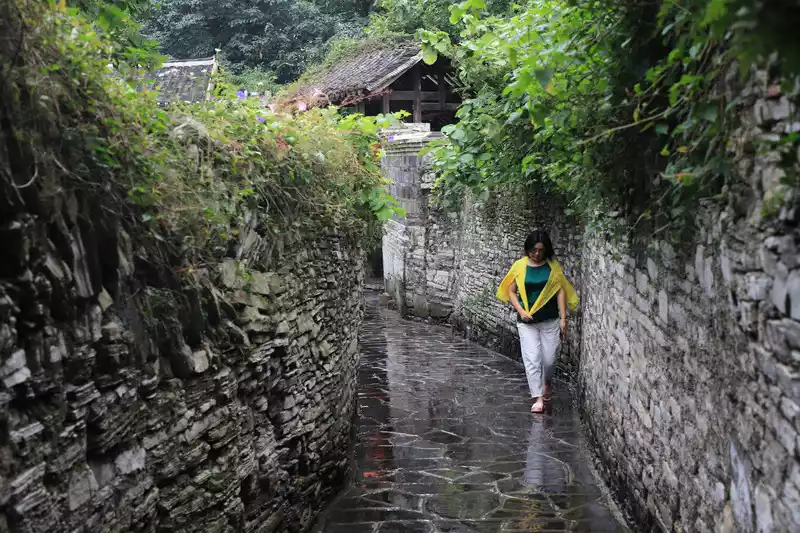
During the Anti-Japanese War, Li Kenong's family and Meng Qingshu's family lived in the courtyard of this street, and the movie "Looking for a Gun" also left countless wonderful shots for the back street

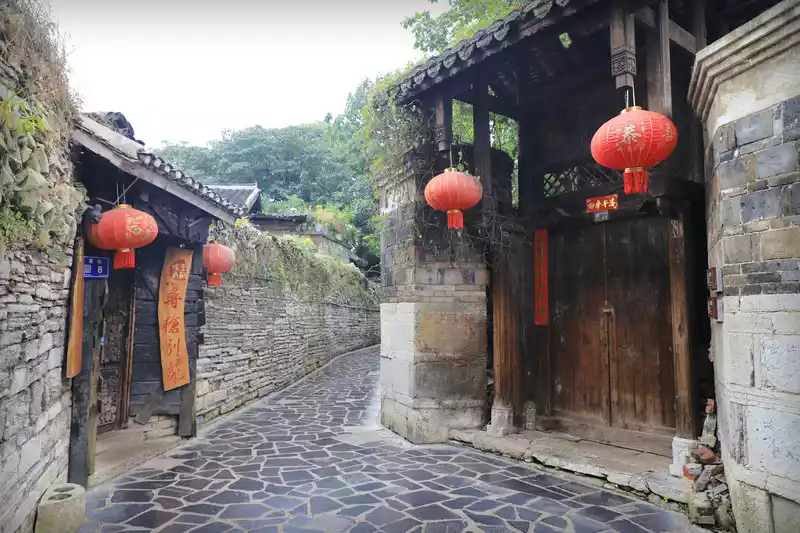
Ciyun Temple, founded in the Kangxi period, was rebuilt in the twelfth year of Daoguang (1832).The gate is closed and closed
to the outside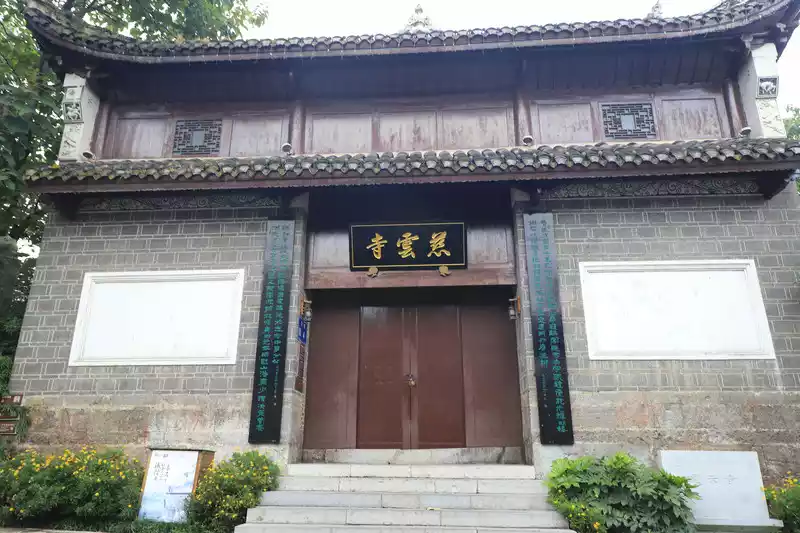 >Wanshou Palace, also known as "Tianzhu Palace" and "Jiangxi Guild Hall", is a Taoist palace. It was built in Jiangxi in the forty-third year of Qianlong in the Qing Dynasty (1778), and was rebuilt in the third year of Jiaqing (1796) and the twelfth year of Daoguang (1832). The entire palace courtyard is composed of the main hall, side halls, two side theaters and living areas to form a large building complex
>Wanshou Palace, also known as "Tianzhu Palace" and "Jiangxi Guild Hall", is a Taoist palace. It was built in Jiangxi in the forty-third year of Qianlong in the Qing Dynasty (1778), and was rebuilt in the third year of Jiaqing (1796) and the twelfth year of Daoguang (1832). The entire palace courtyard is composed of the main hall, side halls, two side theaters and living areas to form a large building complex 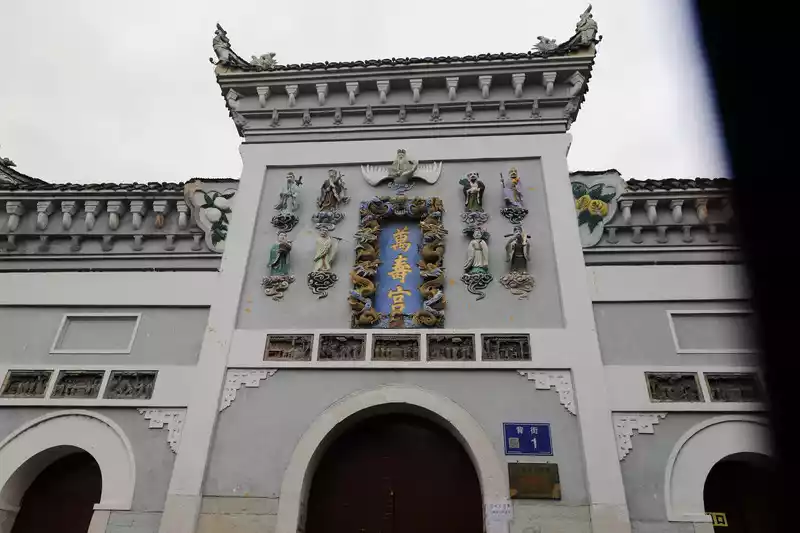 There
There are unique wooden carvings of hanging piers (commonly known as weeping columns) under the cornice of the theater building" The "double lions compete for supremacy" arch is really rare in the ancient buildings in Guizhou, and it is a rare ancient architectural masterpiece
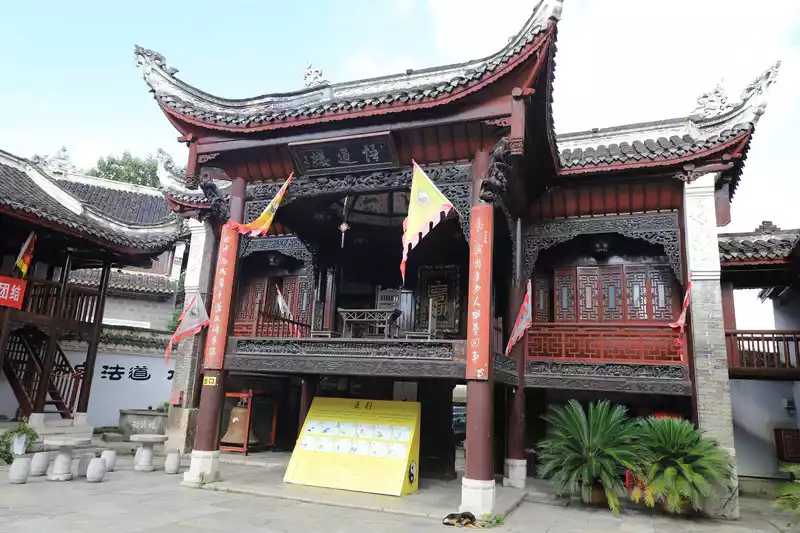
The content includes "Hongmen Banquet", " Han Xin points troops", "Ambush on all sides", "Embattled", etc.
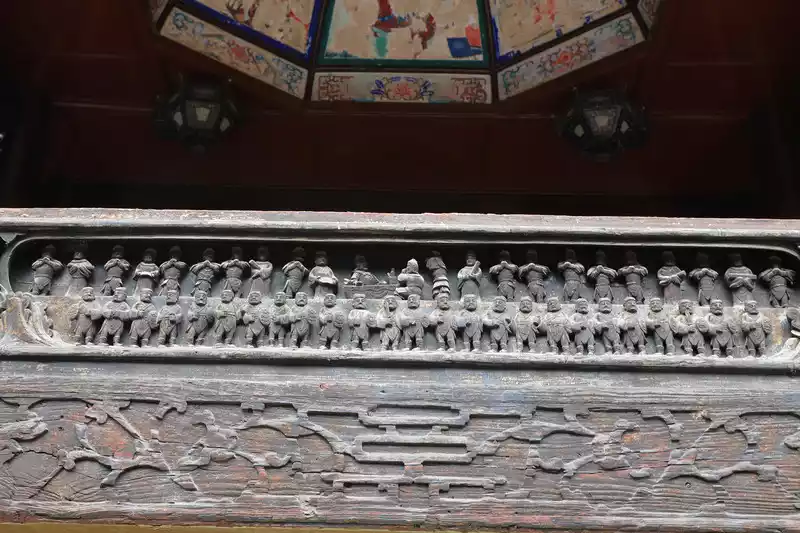
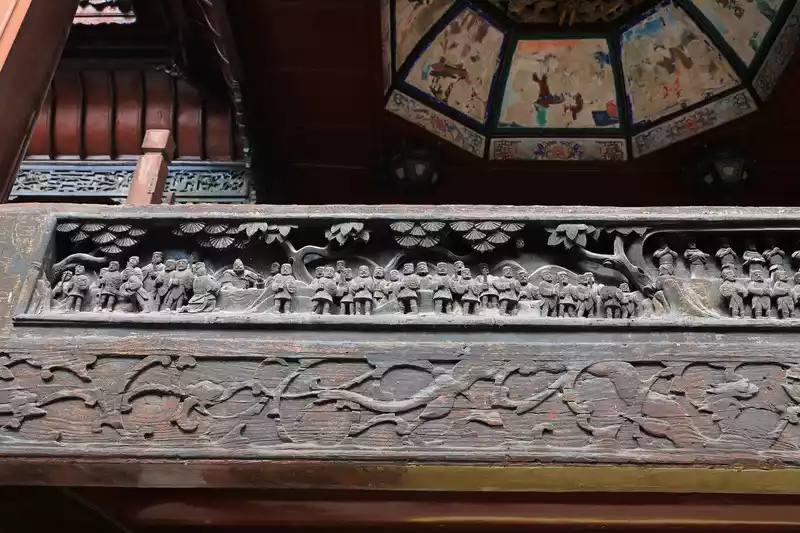
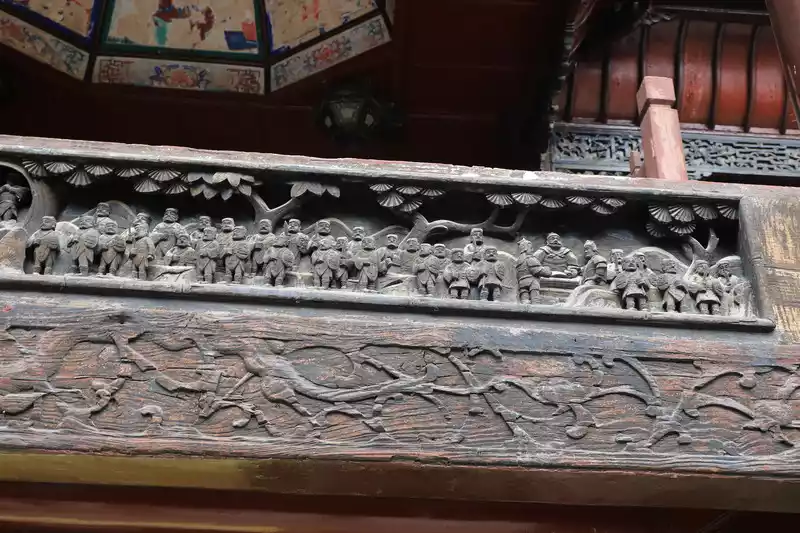
During the War of Resistance Against Japanese Aggression, National Zhejiang University moved west to Qingyan and ran a school here, leaving unforgettable feelings.
Zhao Lilun's centennial square, only a few steps away from Guangding Gate, was built in the twenty-third year of Qing Daoguang (1843), the archway is 9.5 meters high and 9 meters wide, in the style of four pillars and three rooms, three floors and four A roofs. It is built of Qingyan's local stone "white cotton stone", which is white in color and lasts for a long time. There are stone lion guardrails in the north and south of the four pillars, the lion is 1.5 meters high, the front paws hold the treasure, the rear claw wall is on the stone pillar, the middle beam is hollow carved "Two Dragons Grab Treasure", and the north side is engraved with the words "Shengping Renrui". The archway has no foundation groove, and it stands directly on the ground with 4 rectangular column foundations, which are 100 years old.
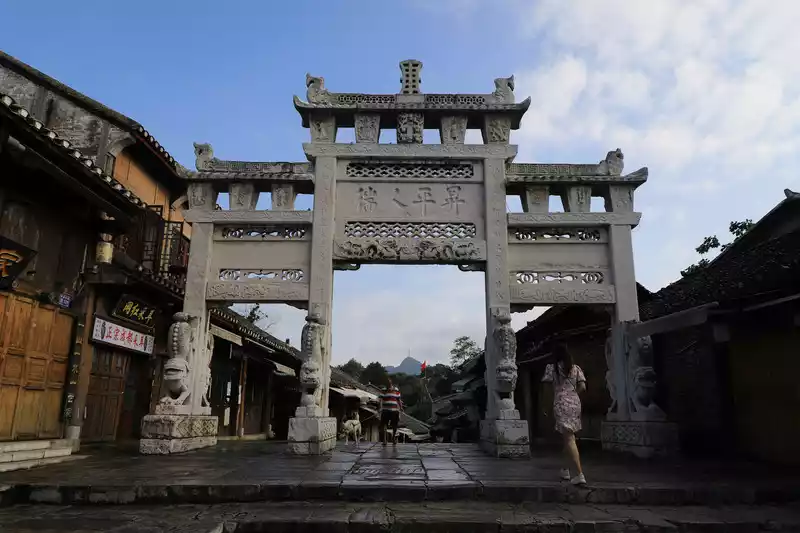
The main feature of this workshop is that the four pillars of the drum stone are not "drums", but "stone lions", and the 8 stone lions are all tailed and head down, like lions going down the mountain. Generally, stone lions mostly take squats, although majestic but dull, while the stone lions on Zhao Lilun's centennial workshop, the male lion and the lion protecting the child, echo each other, reflect each other, unconventional, and particularly lively.
Wenchang Pavilion, No. 143 East Street, was built during the Ming Wanli period and rebuilt during the Qianlong period, with a brick and wood structure, which was a place where scholars often went to read, gather, and worship Emperor Wenchang in the old days. It is currently not open to the public
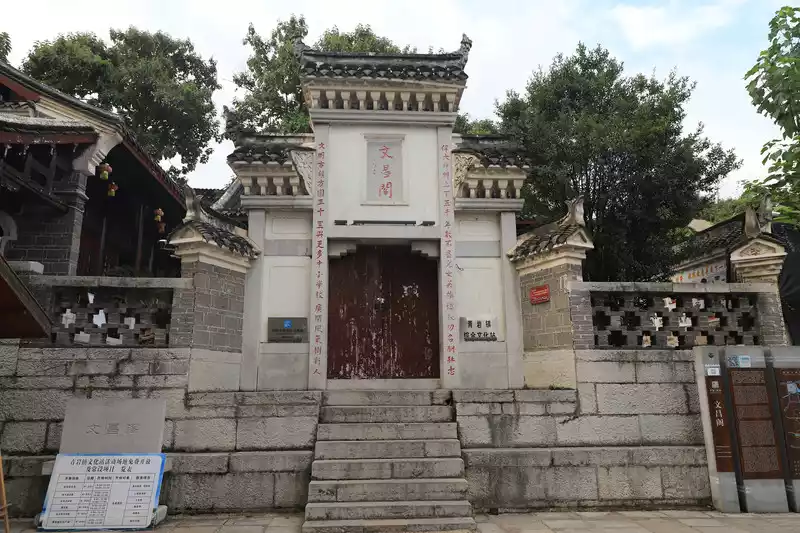
Qingyan Ancient Town, as a military fortress and a special geographical location occupied, has been built and expanded many times, with stone walls and streets paved with stones. The surrounding city walls are built on the cliffs with boulders, and there are four city gates in the east, west, south and north.
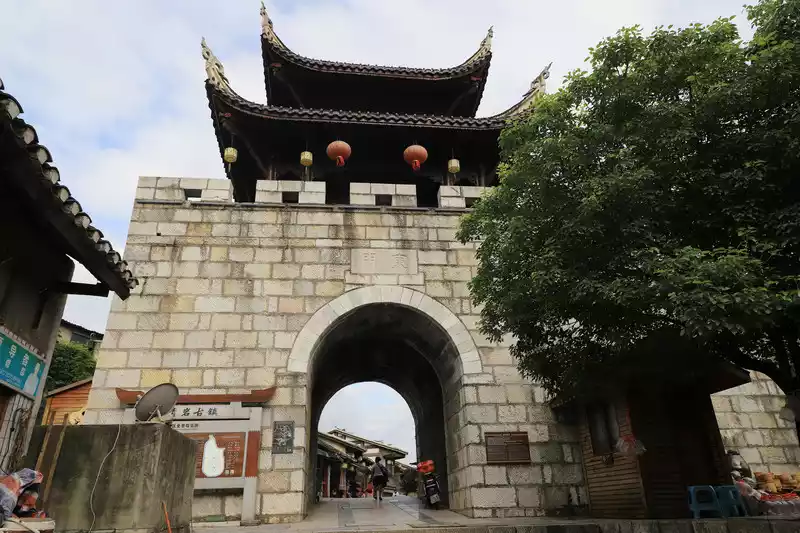

Walking along the long bluestone road, some of the shops on both sides of the street have already opened for business, and the number of tourists on the street has slowly begun to increase
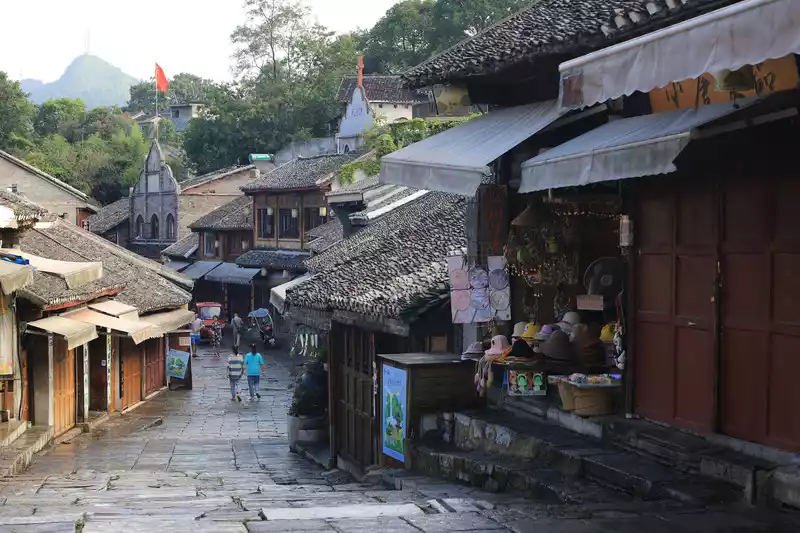
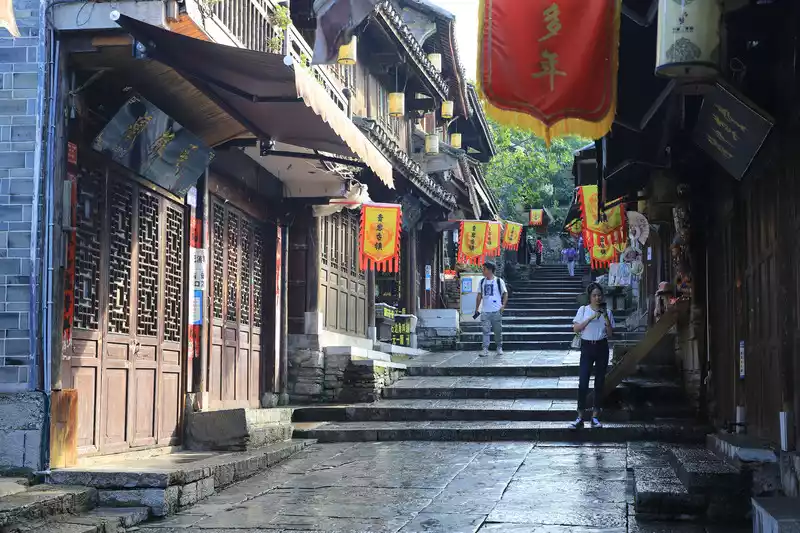
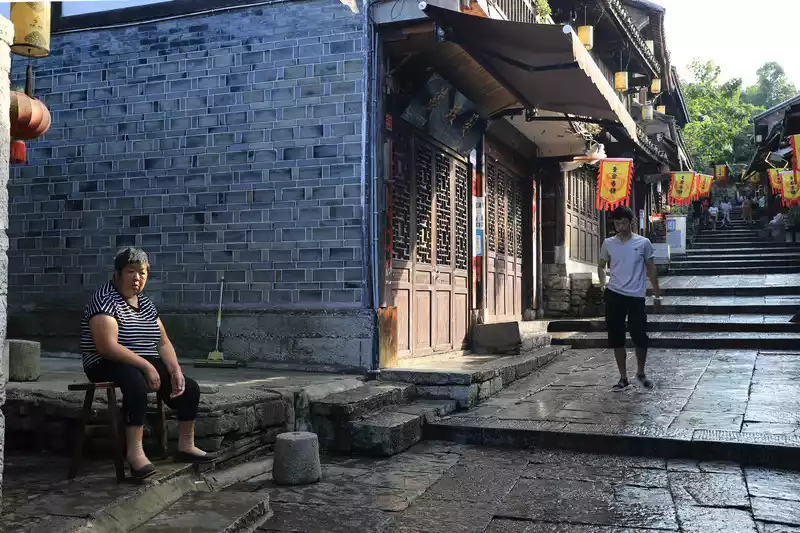
There is a kind of life called Qingyan, which should be a slow life that only belongs to Qingyan
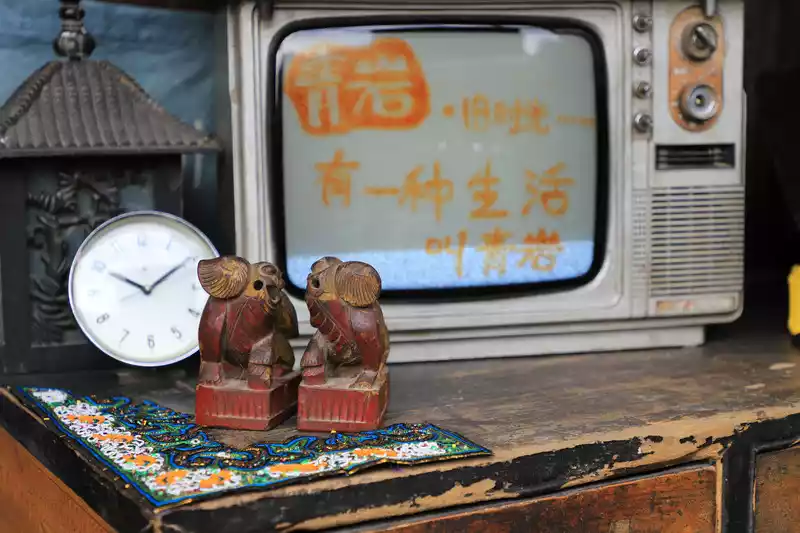
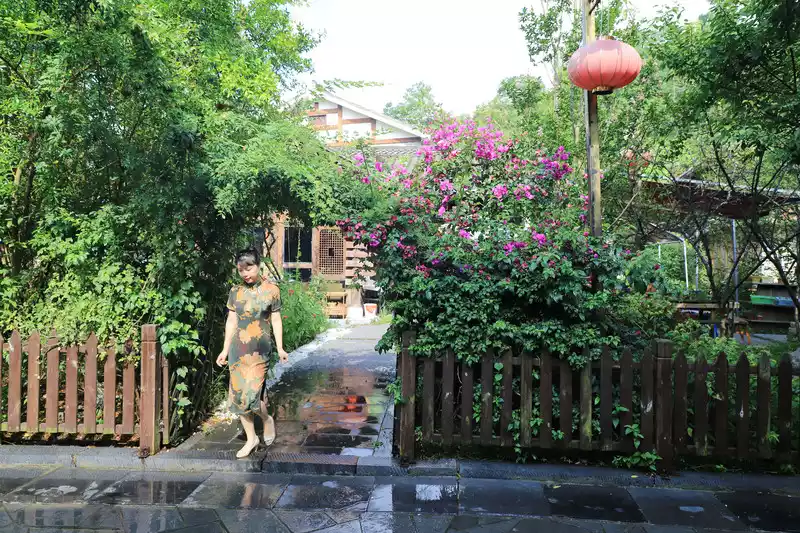
After returning to the B&B to rest for a while, the car booked by the owner of the B&B for us arrived, we went to Guiyang Airport, took flight MU9458, which was originally scheduled to take off at 16:30, but due to the heavy rain in Shanghai, the plane was delayed for nearly 5 hours before taking off, and successfully arrived at Shanghai Hongqiao Airport. Successfully completed this journey.
Number of days:7 days, Average cost: 10,000 yuan, Updated: 2024.01.16
Number of days: 8 days, Average cost: 2400 yuan, Updated: 2020.12.10
, Average cost: 150 yuan, Updated: 2020.05.20
Number of days:6 days, Average cost: 1980 yuan, Updated: 2025.06.11
Number of days: 4 days, , Updated: 2022.08.16
Number of days:8 days, Average cost: 6,000 yuan, Updated: 2025.03.28